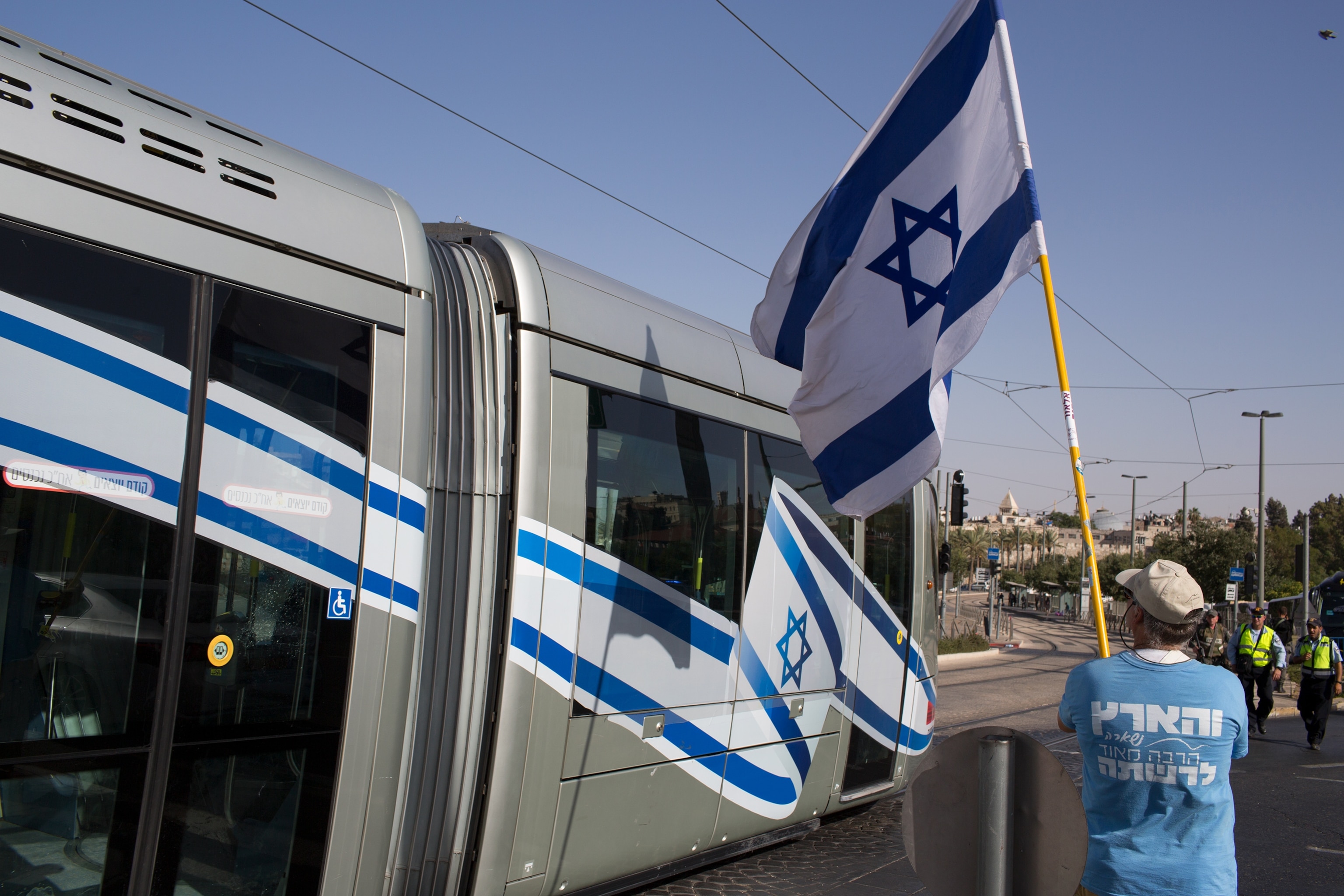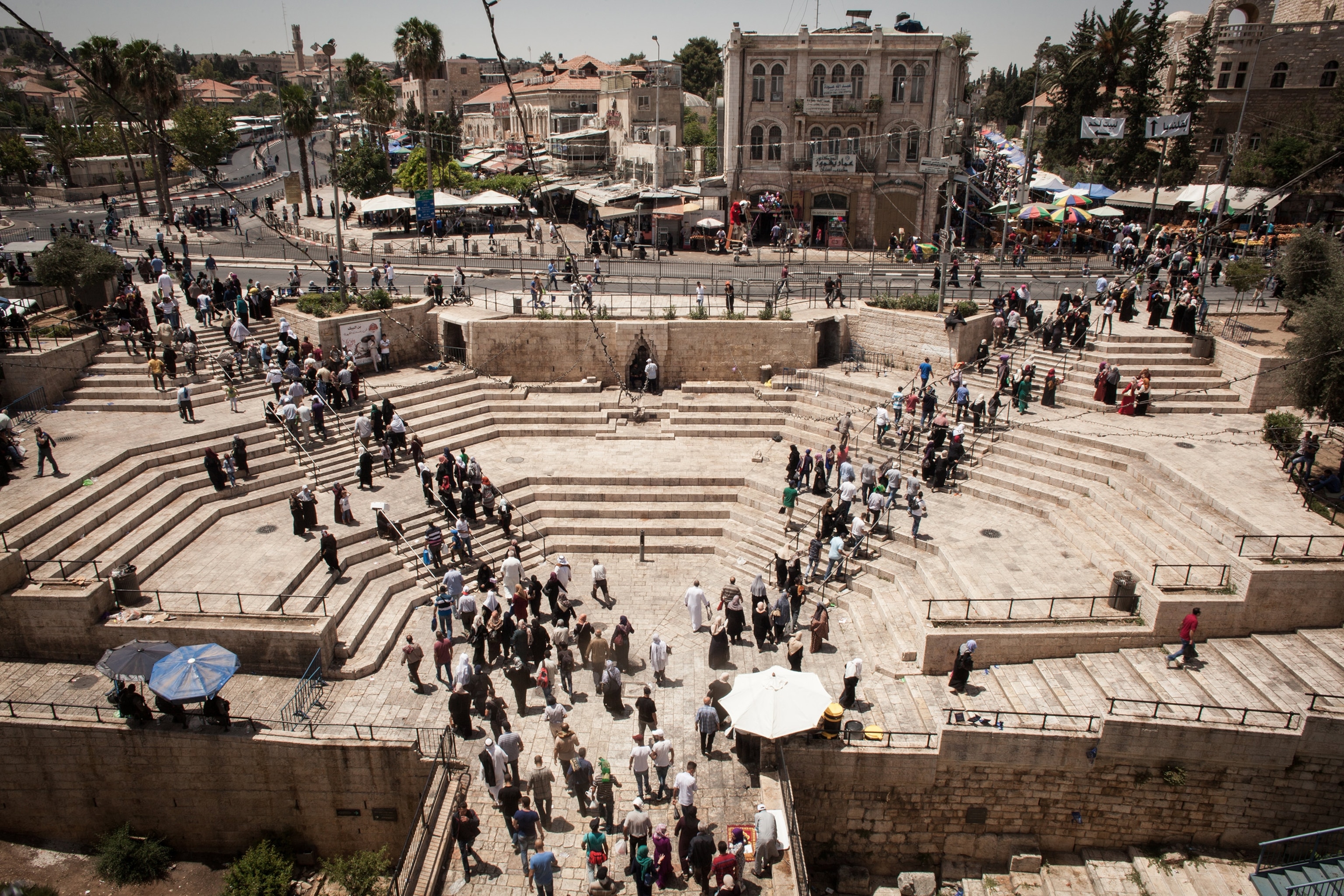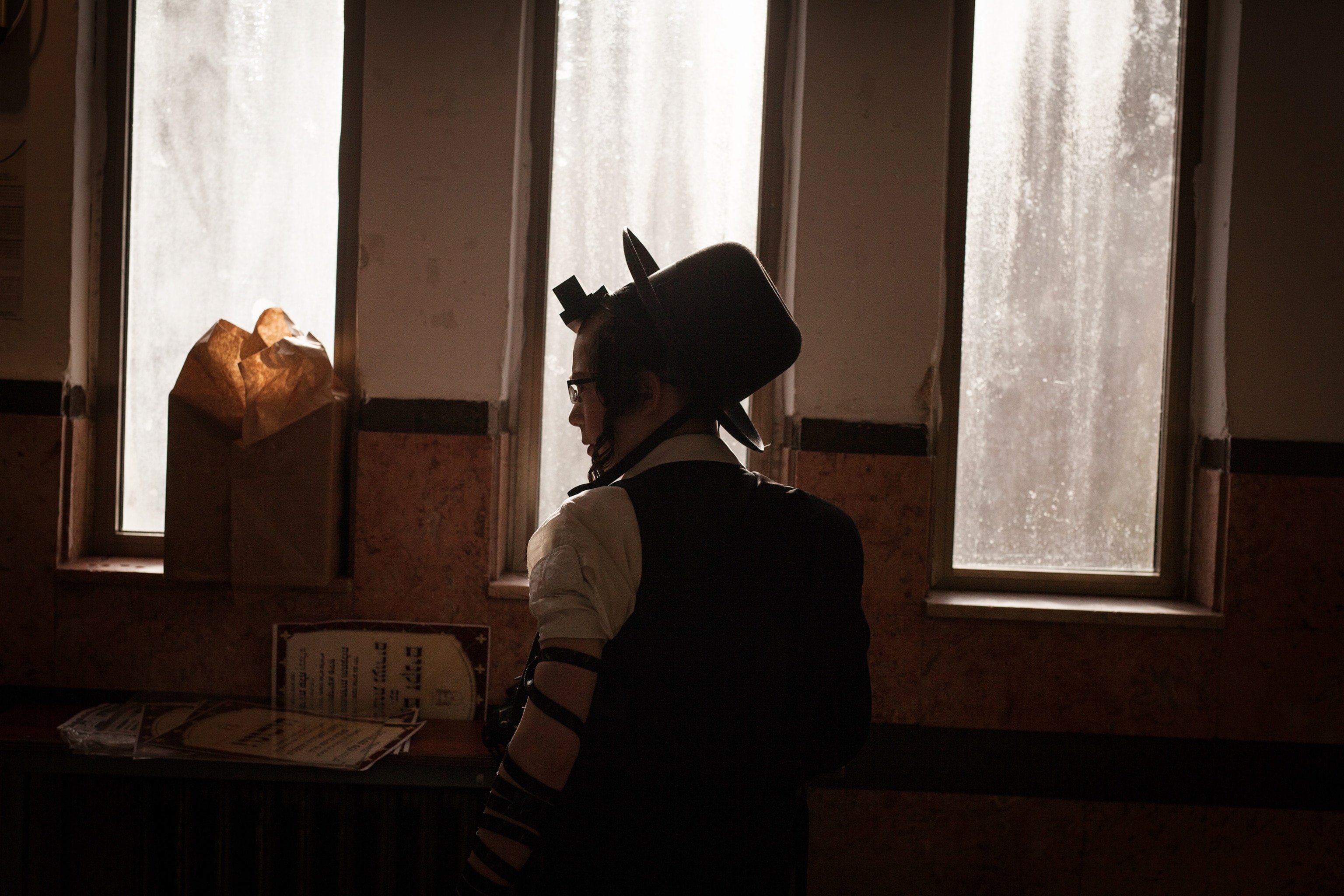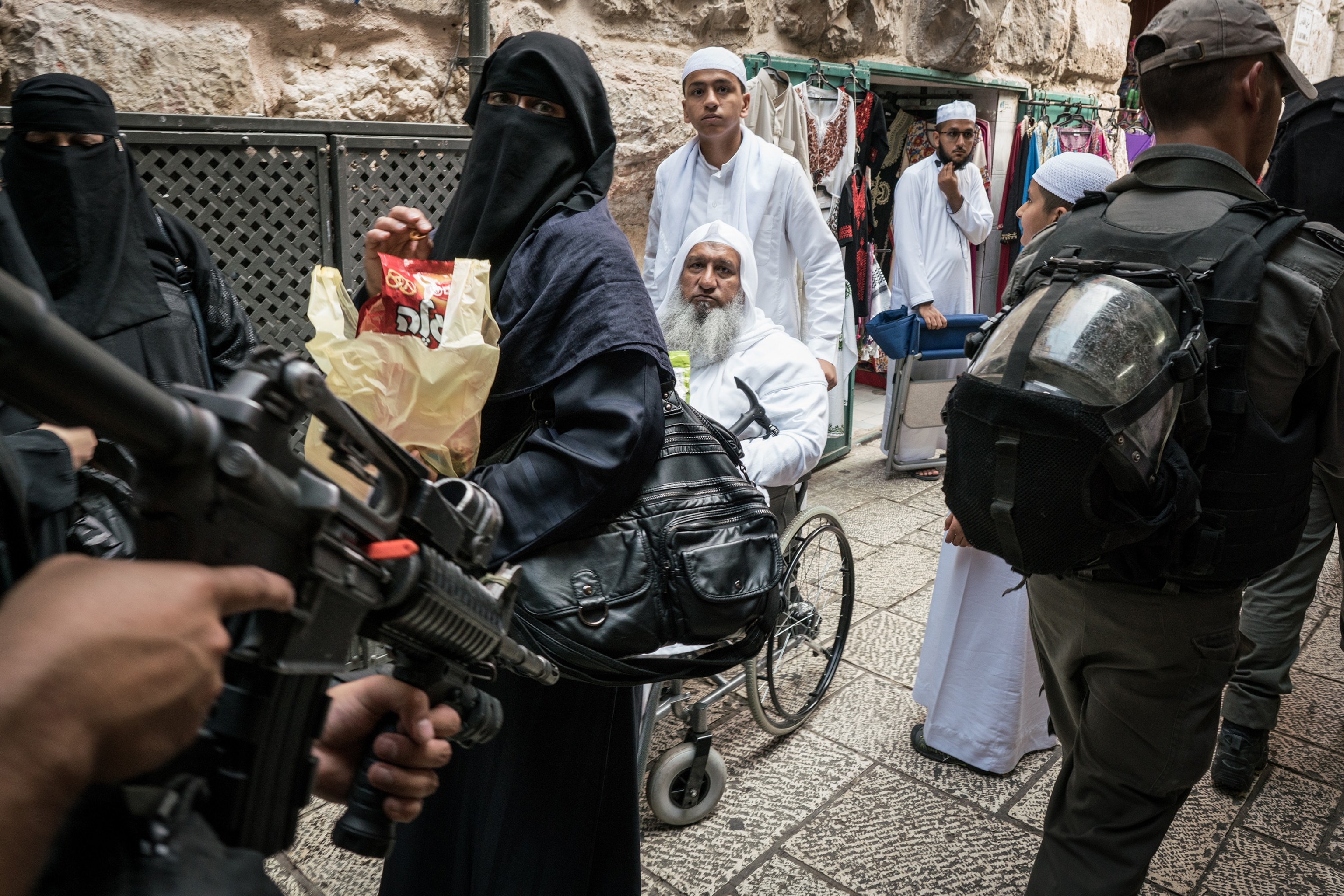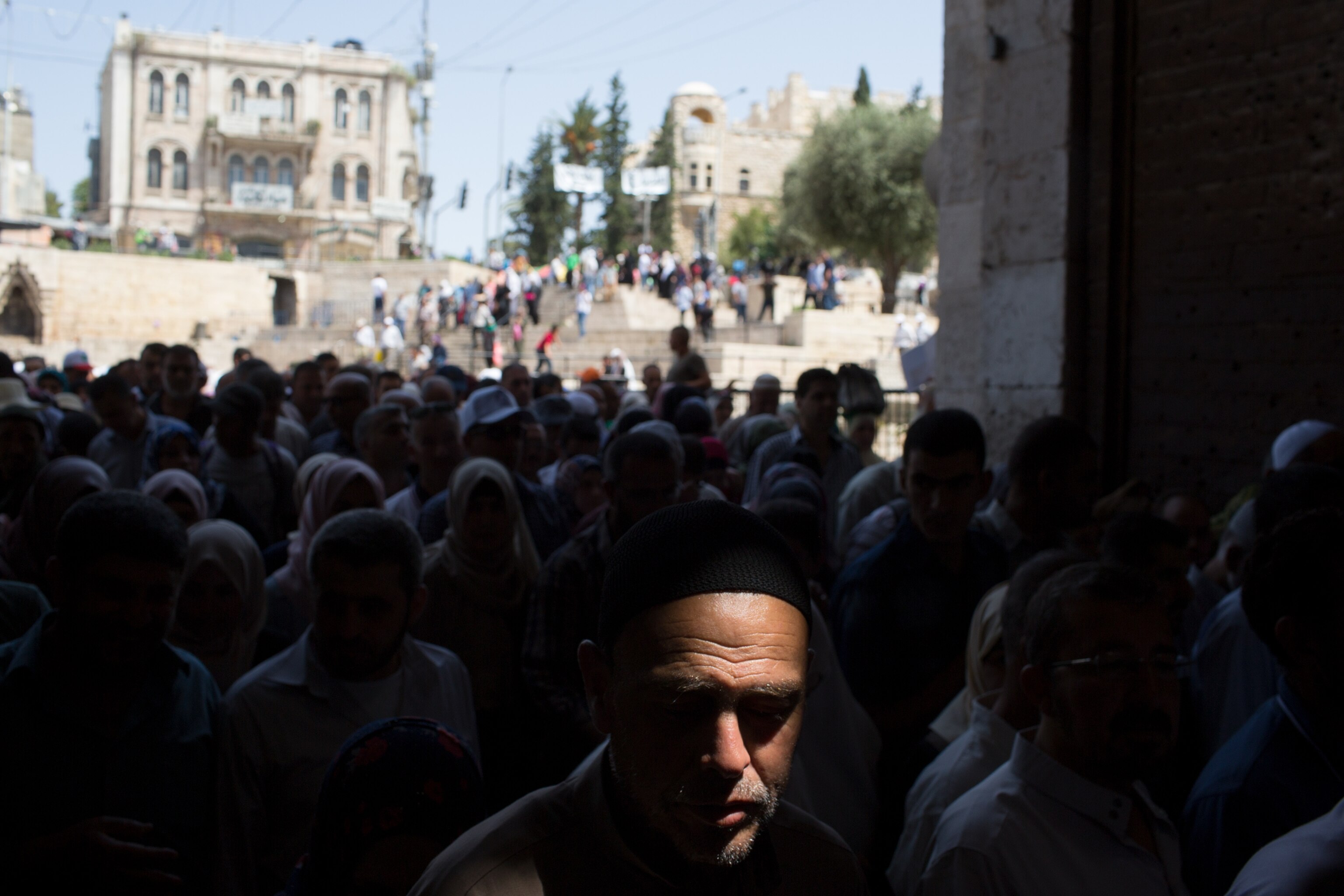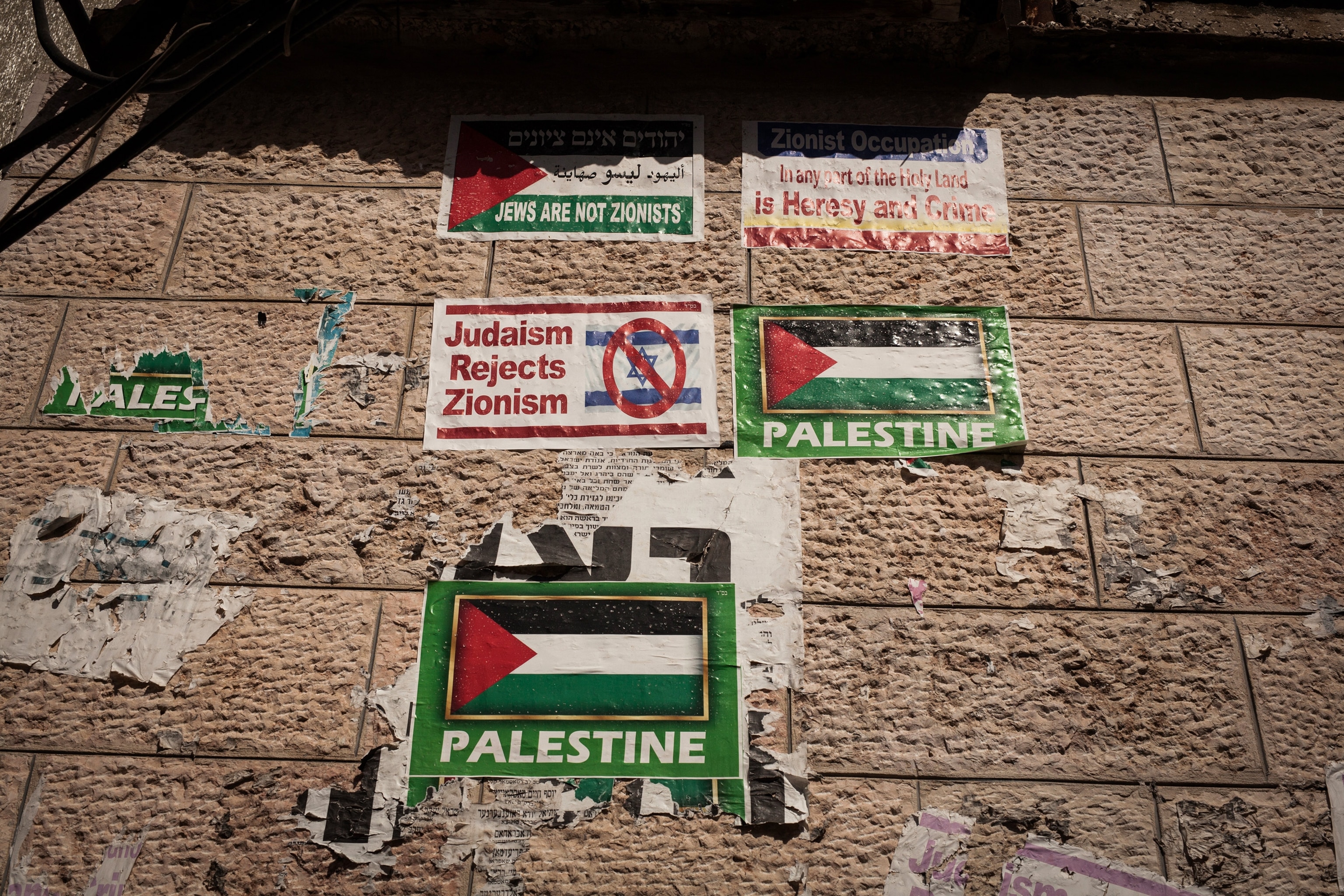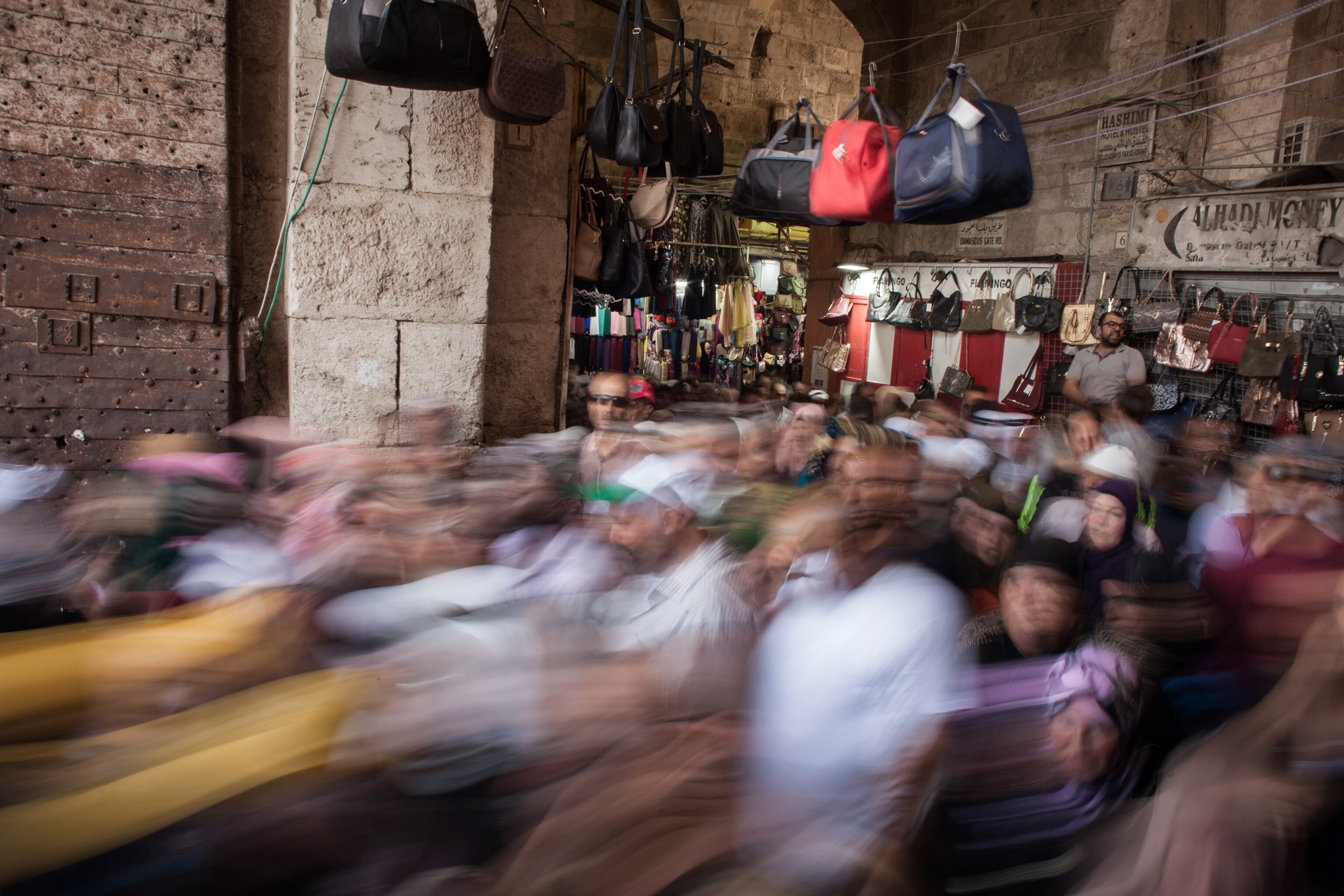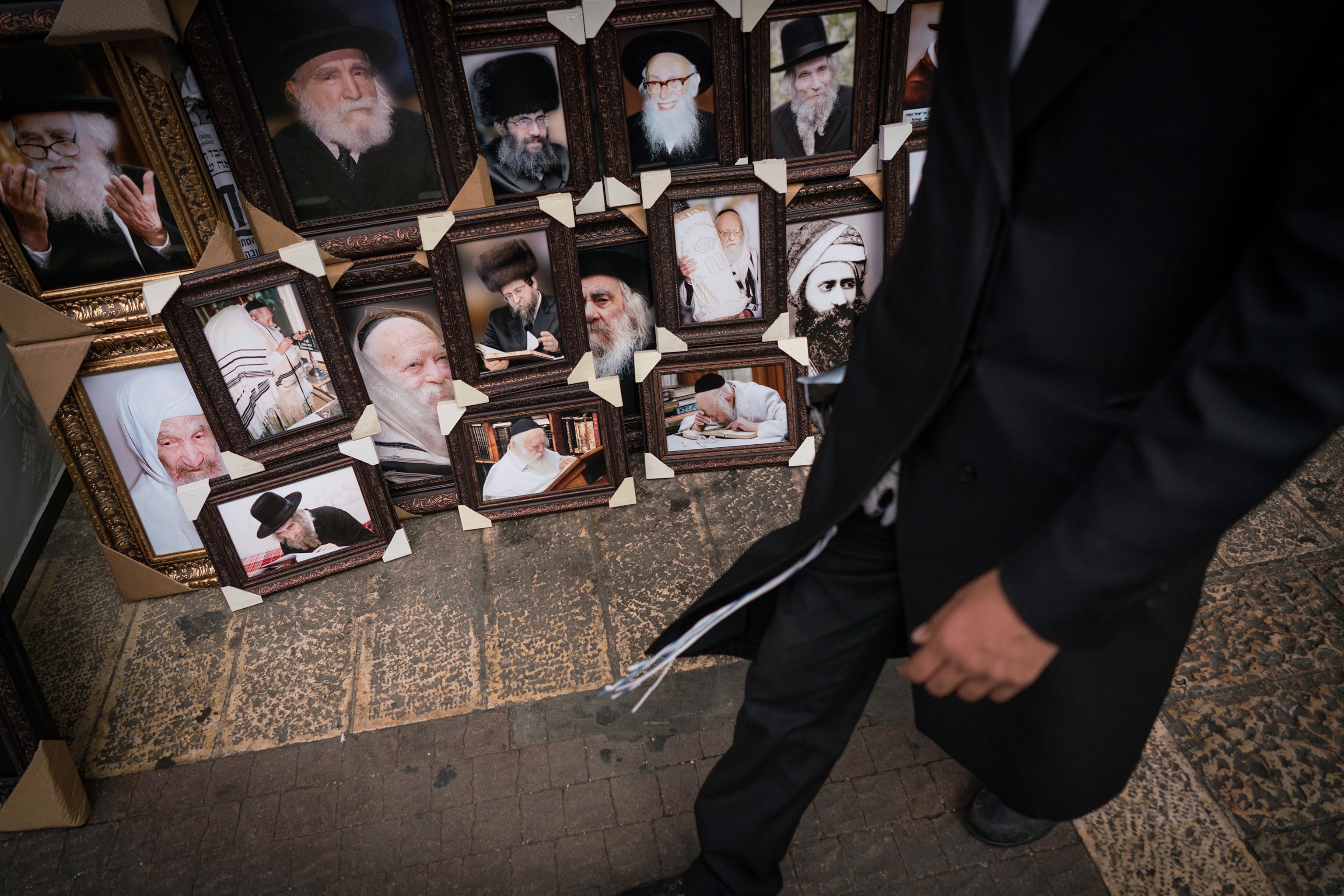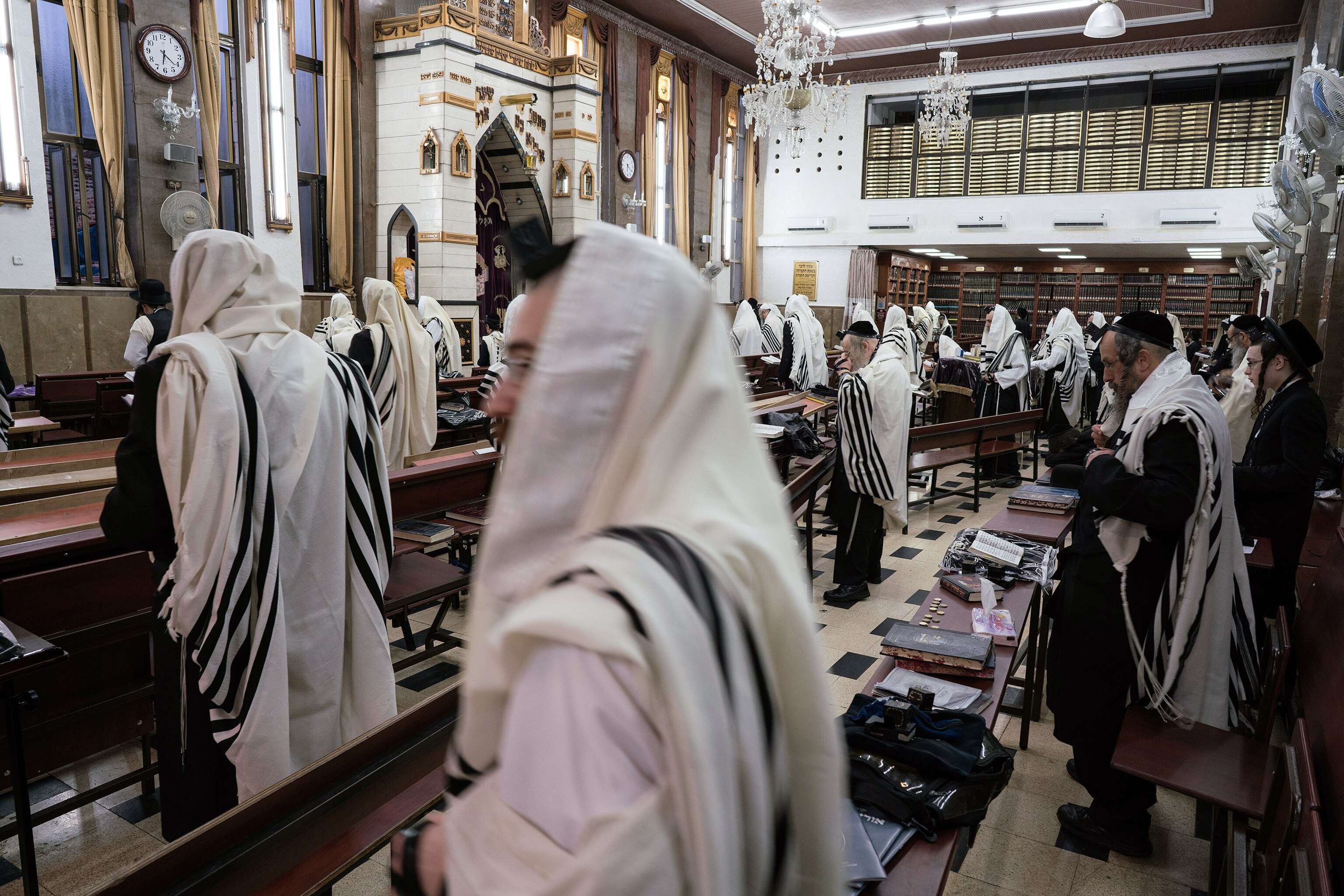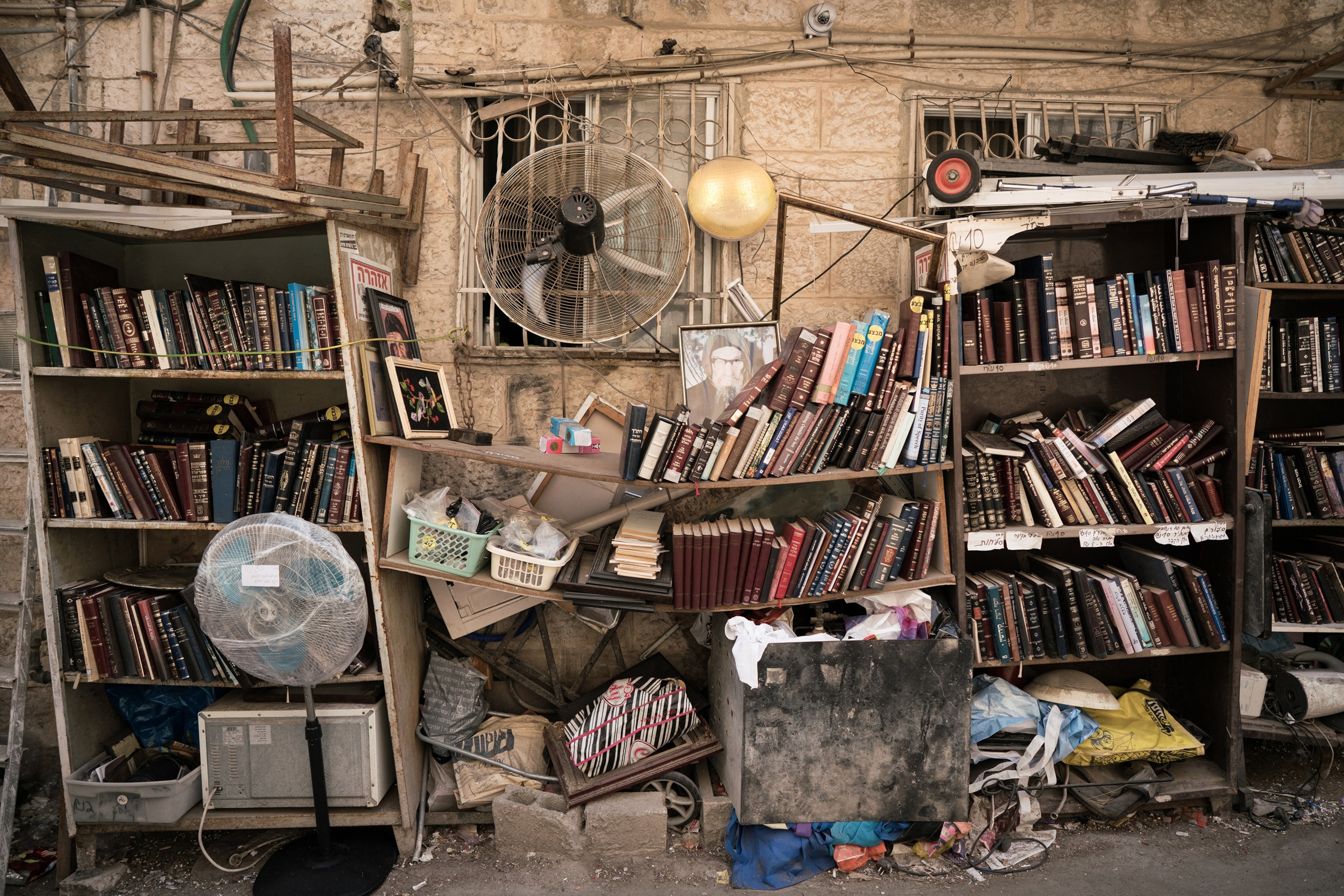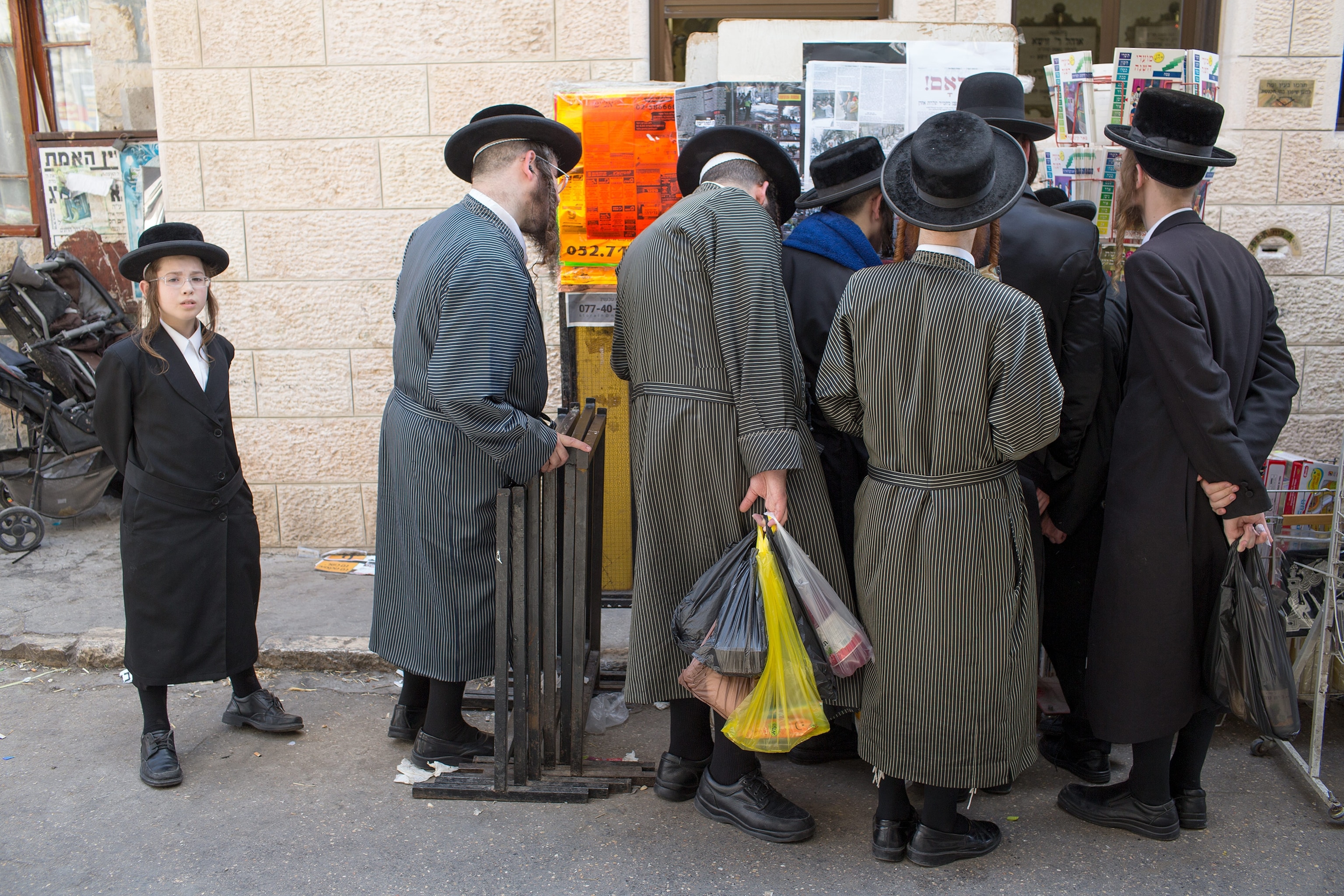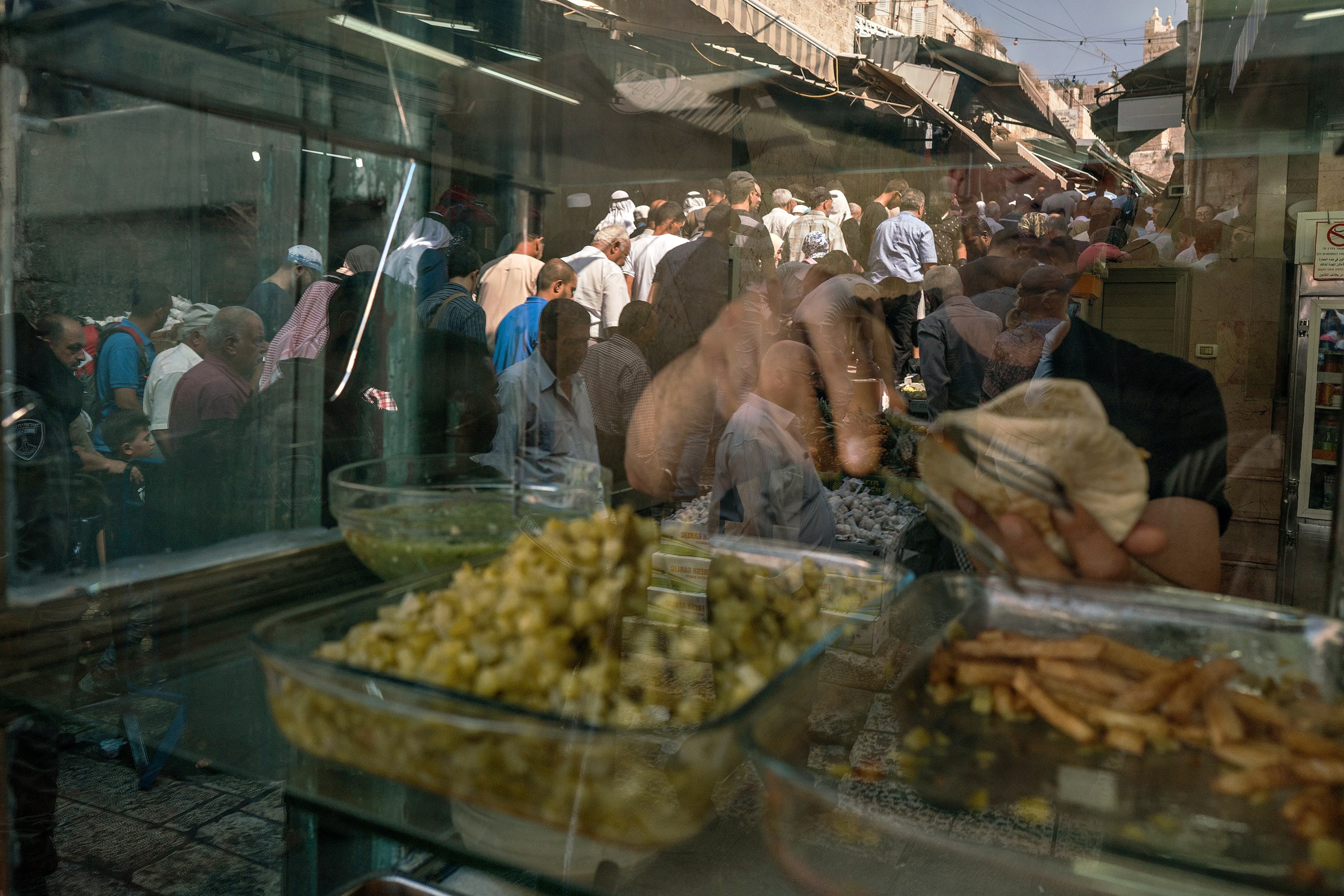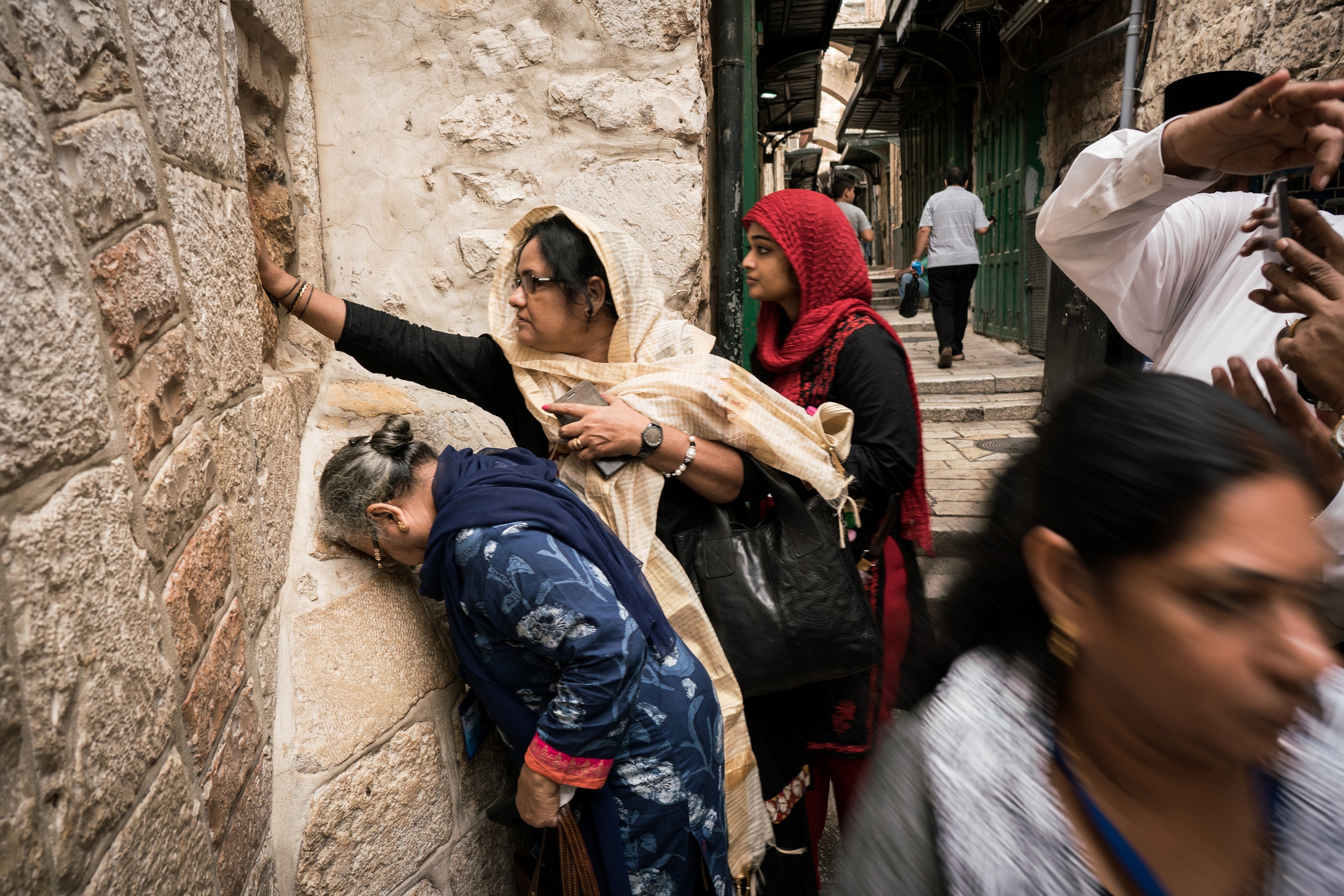
Visit the Crossroads of Jerusalem's Most Unique Neighborhoods
A train stop connects—and divides—two different communities in the city, but residents rarely cross the tracks.
As the most populated and largest city in Israel, Jerusalem undoubtedly presents a patchwork of ethnic and religious diversity. Yet few spots better show the city’s cultures, colors, and indeed, its complexities and anxieties than one particular stop on the light rail train. Walk on either side of the tracks to uncover completely differing stories that help to weave the narrative of the city.
The train, which follows the honking traffic on Jerusalem’s massive artery Road Number 1, transports tourists and residents from neighborhoods and sites near the outskirts, like Yad Veshem near the Mount Herzl end of the line to the Old City gates, and all the way to Shu’afat, a Palestinian refugee camp in northeast Jerusalem.
The mosaic of commuters is a microcosm of the city population. Locals and tourists, Arabs and Jews, religious and secular people—pack the train, always in collision with passengers trying to board the train at the same time people try to get out. Balagan, the Hebrew slang for chaos and a very important word to know in this country, is sometimes an understatement.
Elbow your way to the doors when approaching the Damascus Gate station, and get off here. The year 2017 marks 50 years since the 1967 war between Israel and Jordan, which resulted in Israel’s occupation of the West Bank and East Jerusalem. The border used to be right around here.
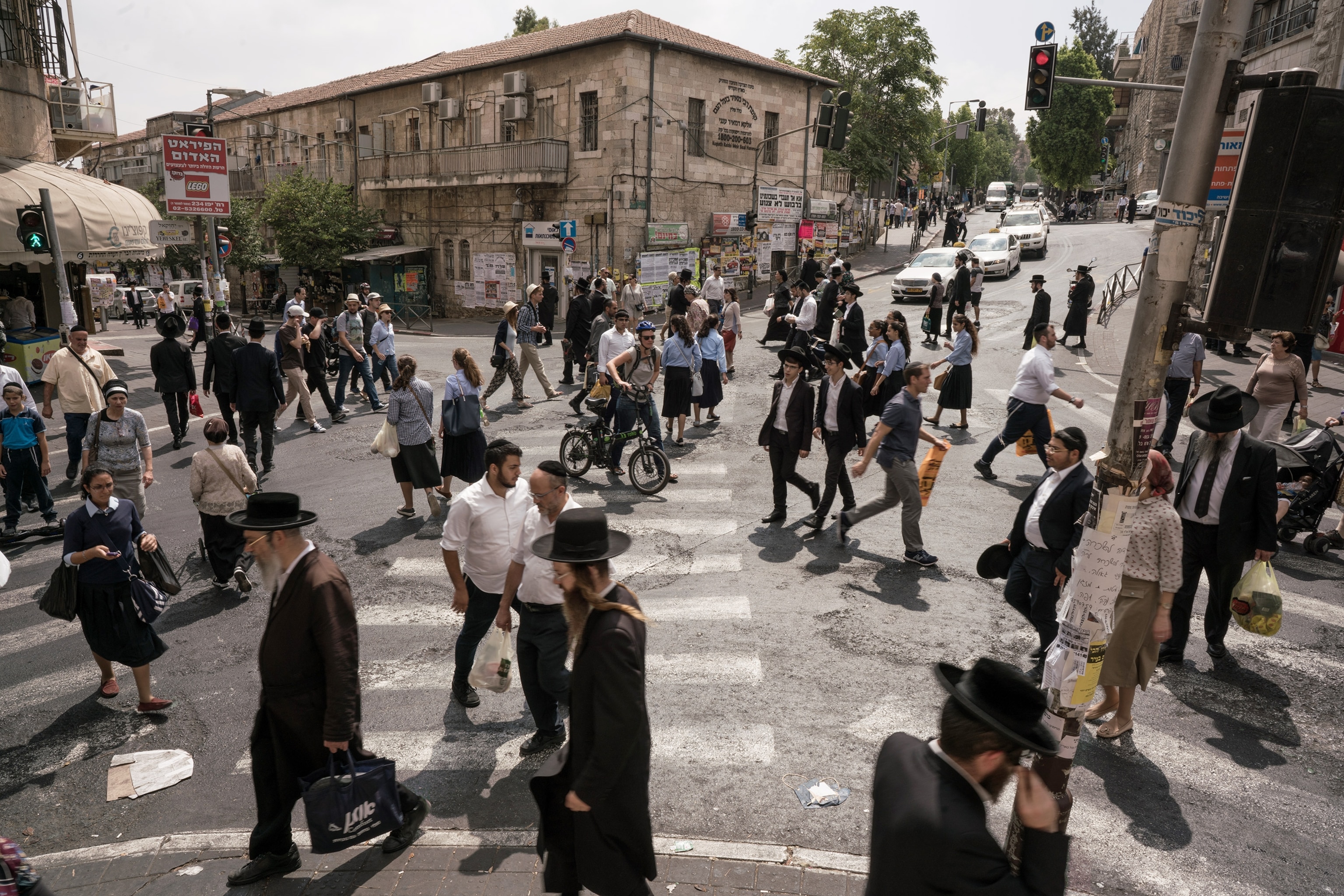
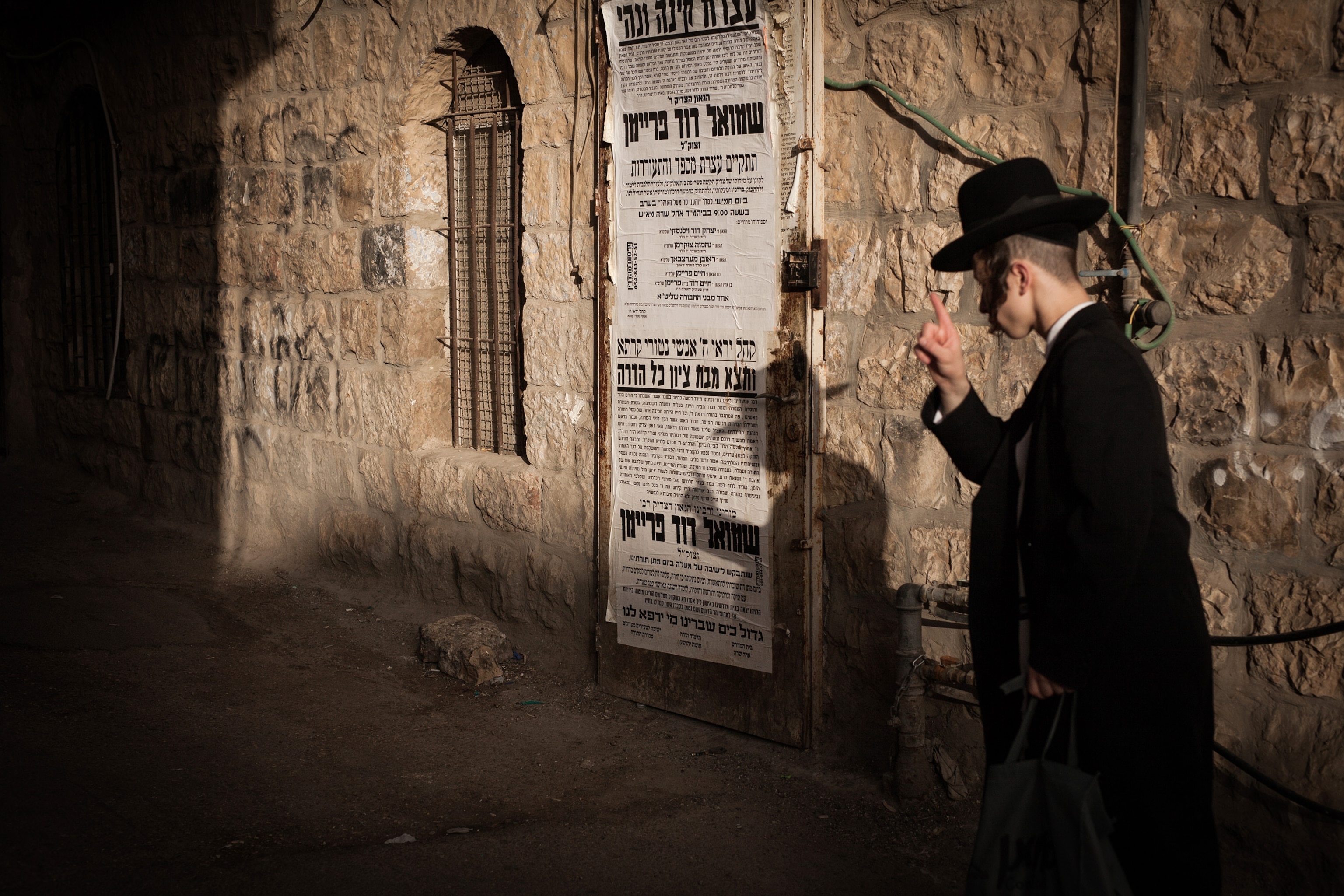

Head west of the train tracks to one of Jerusalem’s oldest and most religious neighborhoods, Mea She’arim (with a Biblical meaning of "hundredfold"). Established in 1874, Mea She’arim was one of the first neighborhoods outside the Old City’s stone walls. The strict Orthodox Hasidic Jews dress in heavy black coats, the women stroll with long dark dresses and modestly covered heads. A walk through these streets and alleys transports tourists back in time and place to a Jewish shtetl (town) in Poland, where the main language is Yiddish, the outfits better suit bitter cold rather than steamy Middleterranean climate. Internet, tv or smart phones are not part of life for many of the people that live here. Signs in both Hebrew and English request, or rather demand, tourists to respect the community and dress modestly. Those who don’t can expect to be yelled at.
Take a peek into one of an endless number of synagogues and yeshivas (religious schools). Hop into Deutch restaurant for a piece of sweet kugel (traditional Ashkenazi food made from potatoes or noodles) or a bowl of cholent (Jewish stew). Then enter one of the many bakeries around the neighborhood for chocolate rugelach, a filled pastry. Ask your way to the tiny market at the center of the neighborhood, since it’s hidden between the narrow streets. There, shop for Jewish holy books, Judaica accessories, and produce.
Crossing the train tracks along Road Number 1 heading back east, and a completely different atmosphere emereges. Damascus Gate, one of the main access points into the Old City, rises above a thriving, loud, and colorful market of its own. Many tourists will pass this place quickly as they head into the Old City walls. But a stop outside the gate will give you an insight into how the Arab population of Jerusalem lives life. Find here some of the best hummus in the entire country at Ikermawi (just not too late since the place closes when the hummus runs out mid-afternoon). Follow the smell and smoke for one of the kebab men standing around, selling heaven in pita bread for only 10 shekels (or less than three dollars). For dessert waste your calories on a sweet pistachio baklava, the traditional Arabic sweet of flaky layers covered in sticky syrup. This entire smorgasbord runs parallel to the train tracks.
- National Geographic Expeditions
On Fridays, the area is packed with Muslims heading to Al Aqsa Mosque to pray, and police presence is massive. Saturday is the main market day, and even some secular Jews come to shop here, when most other stores in town are closed for Shabbat, the Jewish holy Saturday.
It’s been 50 years since the “reunification,” as many Israeli politicians call it, of the city of Jerusalem. A visit here presents a fascinating, yet more complex, reality. The physical border that used to split east and west Jerusalem is long gone. Yet, the division is still present. There is something similar in the hectic and raw experience Mea She’arim and Damascus Gate area offers the visitor that you can't get anywhere else in the city. Sadly, the people living in the neighborhoods rarely cross the tracks.

Born in Jerusalem, journalist Uri Blau writes for Haaretz newspaper. Follow him on Twitter. Photographer Yoray Liberman is based in Tel Aviv and recently photographed This is Tourism in the Occupied Palestinian Territories for National Geographic Travel.
